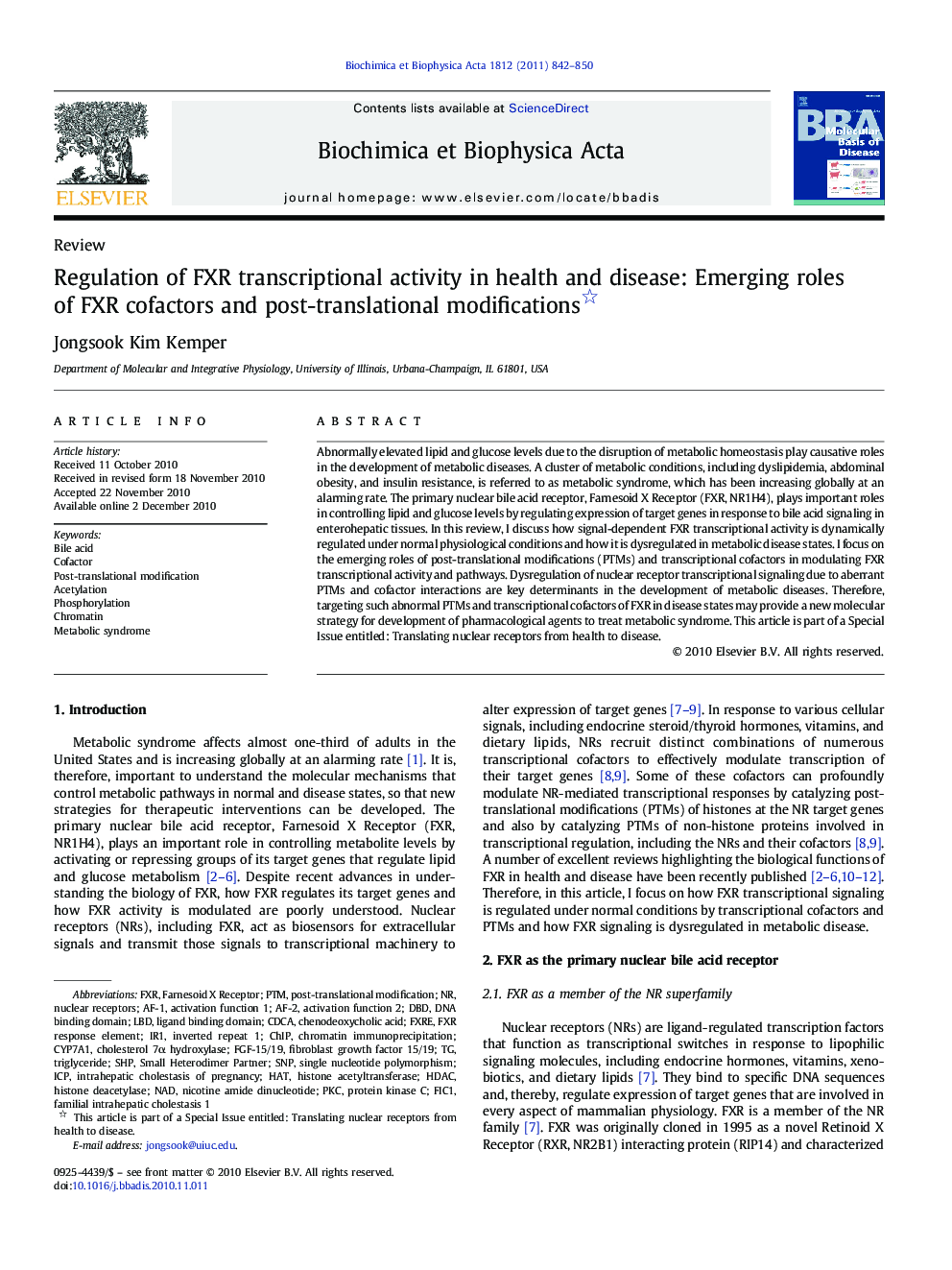| Article ID | Journal | Published Year | Pages | File Type |
|---|---|---|---|---|
| 1905081 | Biochimica et Biophysica Acta (BBA) - Molecular Basis of Disease | 2011 | 9 Pages |
Abnormally elevated lipid and glucose levels due to the disruption of metabolic homeostasis play causative roles in the development of metabolic diseases. A cluster of metabolic conditions, including dyslipidemia, abdominal obesity, and insulin resistance, is referred to as metabolic syndrome, which has been increasing globally at an alarming rate. The primary nuclear bile acid receptor, Farnesoid X Receptor (FXR, NR1H4), plays important roles in controlling lipid and glucose levels by regulating expression of target genes in response to bile acid signaling in enterohepatic tissues. In this review, I discuss how signal-dependent FXR transcriptional activity is dynamically regulated under normal physiological conditions and how it is dysregulated in metabolic disease states. I focus on the emerging roles of post-translational modifications (PTMs) and transcriptional cofactors in modulating FXR transcriptional activity and pathways. Dysregulation of nuclear receptor transcriptional signaling due to aberrant PTMs and cofactor interactions are key determinants in the development of metabolic diseases. Therefore, targeting such abnormal PTMs and transcriptional cofactors of FXR in disease states may provide a new molecular strategy for development of pharmacological agents to treat metabolic syndrome. This article is part of a Special Issue entitled: Translating nuclear receptors from health to disease.
Research Highlights► FXR has important roles in controlling lipid and glucose levels. ► FXR activity is regulated by transcriptional cofactors, which catalyze PTMs of FXR as well as histones. ► Acetylation of FXR is normally dynamically regulated but is dysregulated in metabolic disease states. ► Aberrant FXR cofactors and PTMs may be targets for development of new therapeutic agents to treat metabolic disease.
